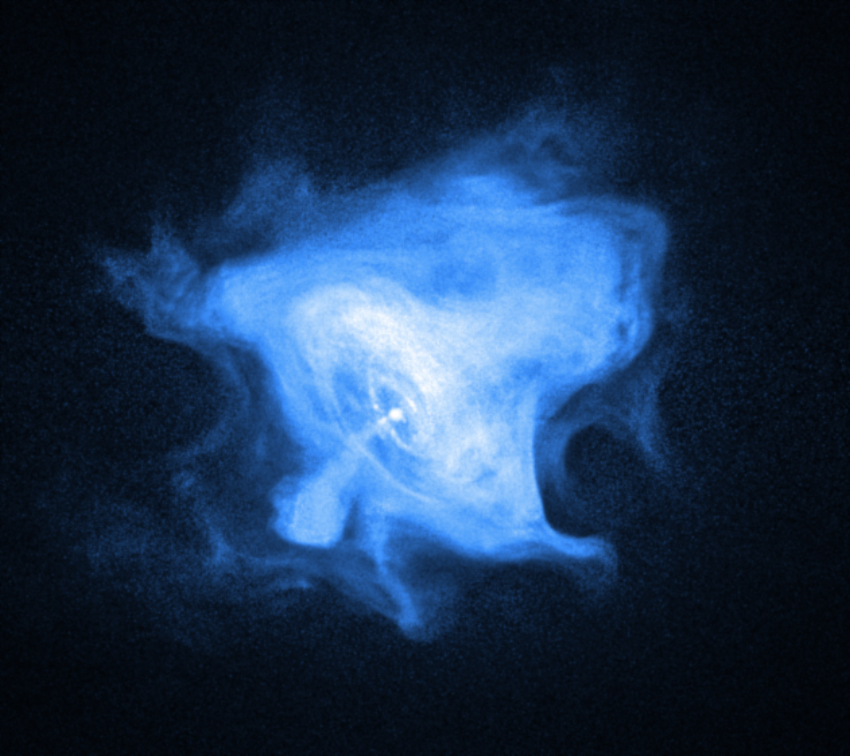
 Credit: NASA/CXC/SAO/F. Seward et al
Credit: NASA/CXC/SAO/F. Seward et al
Blue Crab
A small nugget of compact, condensed matter about 10 kilometers in size lying in the heart of the Crab Nebula has an enormous effect on the matter around it, out to distances more than 3 lightyears away. This nugget, formed in a massive stellar explosion in AD 1054, is a pulsar spinning about 30 times a second, generating an extremely strong magnetic field and producing jets of matter and antimatter. Above is a false-color image (taken by the Chandra X-ray Observatory) of the X-ray emission from the nebula that was left behind by the explosion and is now energized by the rapidly spinning pulsar. Matter and anti-matter flow outward from near the pulsar (the white dot near the center of the image) mostly along the pulsar's magnetic field lines and give the nebula its characteristic elongated shape. The swirls, eddies, filaments and "bays" show the interaction of the outer magnetic fluid with the gas, dust and other stuff left behind by the pulsar's progenitor, the massive star that exploded to produce the pulsar. Evidently all blue crabs like bays.
Published: November 17, 2008
<
HEA Dictionary ● Archive
● Search HEAPOW
● Other Languages
● HEAPOW on Facebook
● Download all Images
● Education ● HEAD
>
Each week the HEASARC
brings you new, exciting and beautiful images from X-ray and Gamma ray
astronomy. Check back each week and be sure to check out the HEAPOW archive!
Page Author: Dr. Michael F. Corcoran
Last modified Monday, 26-Feb-2024 17:45:04 EST


